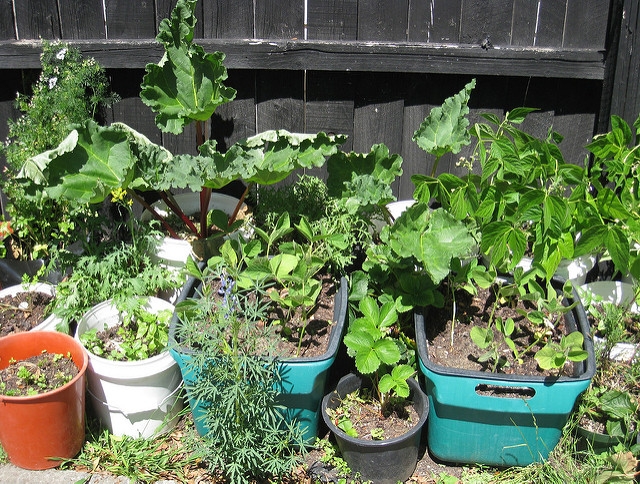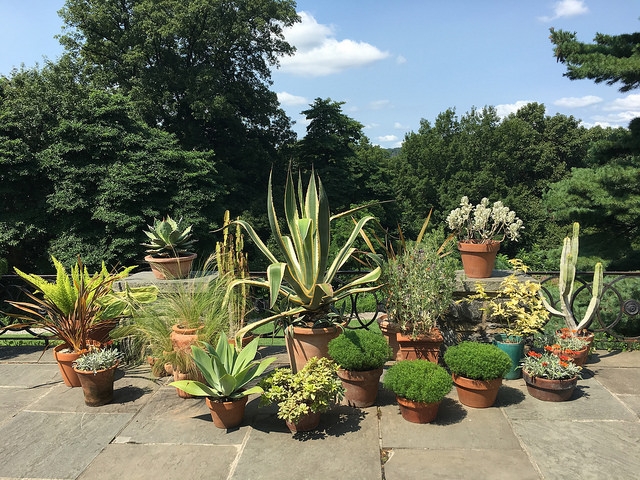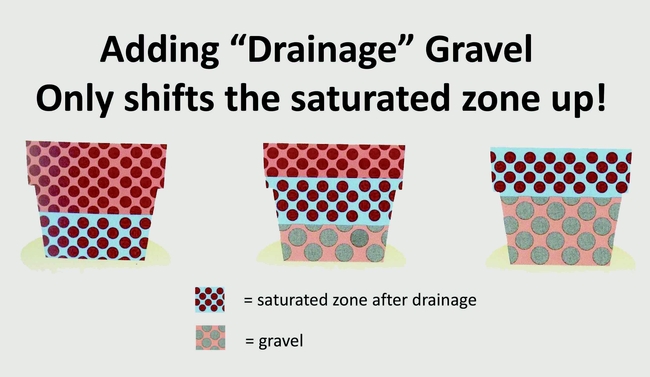If you've been wanting to start a garden but feel a little overwhelmed by the task, why not a container garden? You can start simply with just a pot or two and expand as you build your confidence. Why a container garden?
- You can grow a great variety of vegetables, fruits and flowers in containers
- You don't have to do nearly as much soil prep as you do for an in-ground garden
- Containers can be squeezed into small spaces where a larger garden won't work, for example, on a balcony or small porch.
Container Types

Location, Location, Location
Choose your garden container location based on the cultural needs of the plant you plan to put in the container. Most vegetables need 6-8 hours of sunlight a day, as do a lot of annual and perennial flowers. Some varieties of flowers and foliage don't need as much sun or prefer it to be filtered through trees. If you aren't certain, read about the plant's needs before you choose the location.
Soil

- Anchorage and support
- Storage and supply of water
- Supply of air
- Storage and supply of nutrients
Drainage
Make sure the pot will not damage anything when water drains out of it. It's better not to use a saucer if you don't need it. Why? Because irrigation water with fertilizer in it will leave soluble salts in the soil. If you don't leech these salts out of the pot by adding enough irrigation water so some water drips from the bottom of the pot, the salts will build up in the soil and could cause problems for your plants.
Saturation Zone
There's always a saturated zone at the bottom of the pot after the water drains out. The height of the saturation zone depends on particle size. The finer the particles in the soil, the more saturation occurs. That's important because if the soil is too saturated the plant will have difficulty taking up air through the roots. And although it seems hard to believe, adding gravel at the bottom of the pot only shifts the saturated zone up, leaving less unsaturated soil for the plant to grow in. So don't put a lot of gravel in the bottom of your pots, just a few broken shards to keep your potting mix from falling out the holes in the bottom of your pot. If you have poorly draining soil in your pots, here are a few solutions:
- Improve soil by changing it to a coarser mix
- Practice over-potting if necessary (use a larger pot than you need)
- Increase plant spacing to increase evapotranspiration (the water loss occurring from processes of evaporation and transpiration. Evaporation is when the water on the soil or the plant surfaces turns to water vapor. Transpiration is the loss of water through the leaves of the plant.)
- Irrigate at mid-morning when evapotranspiration is high
Nutrients
The rule for fertilizer is weakly, weekly. That is, frequent but low doses of fertilizer are best for container plants. Using a water-soluble fertilzer is an easy way to control the amount of fertilizer your plants get, because you can apply it when you water your plants, dissolved into your irrigation water.
Visit here and here for additional reading. Don't forget to subscribe to our blog so that you receive an email notification when a new post goes up. If you have questions, contact us online, by phone or in person to get answers to your gardening quandaries!
Dan Randow's container garden photo license is here. Kristine Paulus' container garden photo license is here.
